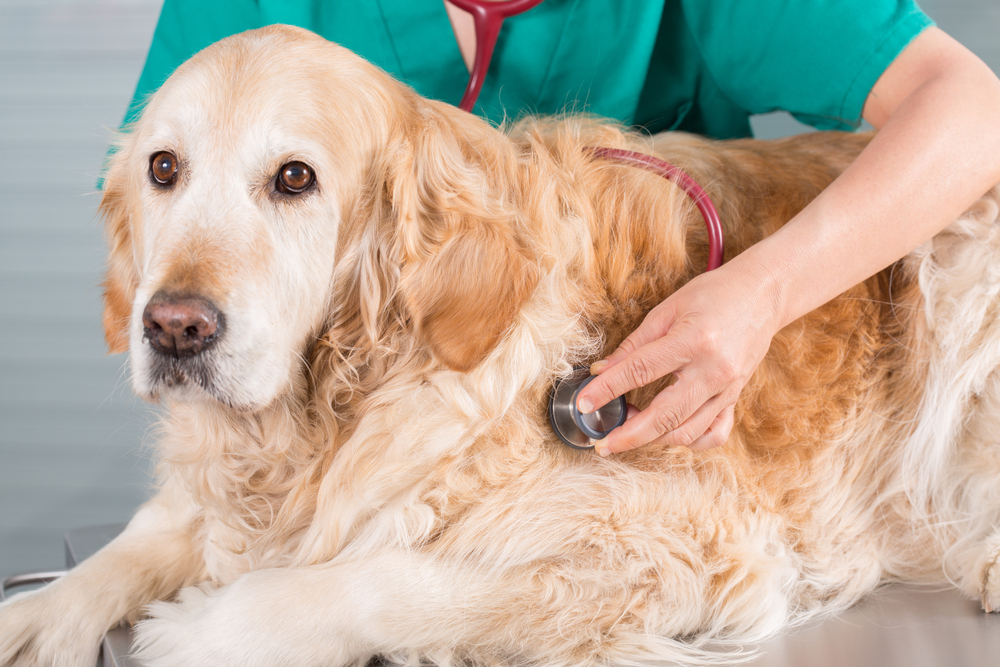Pyometra is a serious uterine infection that can occur in unspayed female dogs. This life-threatening condition requires immediate veterinary intervention to ensure the best outcome. While the symptoms can vary, recognizing the early signs and understanding the importance of prompt treatment is essential. At Mission Veterinary Clinic in Granada Hills, CA, we specialize in handling emergencies like pyometra with compassion and expertise. This article provides a comprehensive overview of pyometra, including what it is, why it occurs, its symptoms, treatment options, recovery process, and prevention strategies.
What is Pyometra?
Pyometra is a bacterial infection of the uterus that occurs due to hormonal changes during a dog’s reproductive cycle. After a heat cycle, elevated levels of the hormone progesterone prepare the uterus for pregnancy by thickening its lining. If pregnancy does not occur, the lining can become an ideal environment for bacteria, such as E. coli, to grow and cause infection.
There are two main types of pyometra:
- Open Pyometra: The cervix is open, allowing pus to drain from the uterus. This often results in noticeable discharge from the vulva.
- Closed Pyometra: The cervix is sealed, trapping infection and pus inside the uterus. This form is more dangerous as it progresses without external signs.
Unspayed dogs, particularly those that are middle-aged or older, are at higher risk of developing pyometra. Certain breeds, including Golden Retrievers, Bulldogs, and Dachshunds, may also be predisposed to this condition.
Learn more about the advanced services we offer at Mission Veterinary Clinic.
Why and When Does Pyometra Occur?
Pyometra typically develops within weeks to months after a dog’s heat cycle. Hormonal changes during this period weaken the uterus’s defenses, making it more susceptible to infection. The most common bacteria involved in pyometra, E. coli, often originates from the dog’s digestive tract or vaginal area.
Factors that increase the risk of pyometra include:
- Age: Older dogs with repeated heat cycles are more likely to develop uterine changes.
- No prior pregnancies: Dogs that have never been bred are at higher risk due to prolonged hormonal exposure.
- Poor hygiene during heat cycles: Increased bacterial exposure can lead to infection.
Understanding when to seek care for emergencies like pyometra is crucial. Refer to this helpful resource: Help: Is This a Pet Emergency? – AAHA.
Recognizing the Symptoms of Pyometra
The symptoms of pyometra vary depending on whether the infection is open or closed. Recognizing these signs early can save your dog’s life.
Symptoms of Open Pyometra
- Foul-smelling vaginal discharge
- Lethargy or weakness
- Increased thirst and urination
- Reduced appetite
Symptoms of Closed Pyometra
- Abdominal swelling
- Vomiting or diarrhea
- Weakness or inability to stand
- Signs of shock, such as pale gums and rapid breathing
If your dog shows any of these symptoms, particularly after a heat cycle, seek veterinary care immediately. For additional guidance, read Emergency Pet Symptoms: When to Seek Immediate Care.
Diagnosing Pyometra
At Mission Veterinary Clinic, diagnosing pyometra involves a thorough evaluation and diagnostics to confirm the condition and assess its severity.
- Physical Examination: The veterinarian checks for abdominal swelling, pain, or discharge.
- Blood Tests: These tests can identify elevated white blood cell counts (indicating infection) and assess kidney and liver function.
- Imaging: X-rays or ultrasounds help visualize an enlarged uterus filled with fluid or pus, confirming the diagnosis.
Our dedicated team is skilled in identifying and treating critical conditions like pyometra.
Treatment Options for Pyometra
Pyometra is a medical emergency, and immediate treatment is necessary to prevent complications. The most effective option is surgery, though additional stabilization may be required beforehand.
Emergency Surgery (Ovariohysterectomy)
This procedure involves removing the infected uterus and ovaries, eliminating the source of infection. Surgery is the most reliable treatment for pyometra, particularly in closed cases where the risk of uterine rupture is high.
Pre-Surgical Stabilization
- Intravenous fluids are administered to address dehydration and stabilize vital signs.
- Antibiotics are used to manage infection before and after surgery.
Non-Surgical Options
In rare cases, hormonal and antibiotic therapy may be considered for breeding dogs. However, this approach carries significant risks and is less effective than surgery.
Delaying treatment can lead to severe complications, including uterine rupture or systemic sepsis. Learn more from the AVMA about Emergency Care.
Recovery and Outcomes
With timely treatment, most dogs recover well from pyometra. Proper post-operative care is essential for ensuring a smooth recovery.
What to Expect During Recovery
- Improved appetite and energy levels within days.
- Full recovery typically takes 2–4 weeks, depending on the severity of the infection and any complications.
Potential Complications
- Post-surgical infections or scarring
- Rare hormonal imbalances after recovery
Without treatment, pyometra is almost always fatal due to complications like sepsis or uterine rupture. To be prepared for the worst, read Why Does My Dog Need an E-Collar?.
Preventing Pyometra

The most effective way to prevent pyometra is to have your dog spayed. Spaying removes the uterus and ovaries, eliminating the risk of uterine infections and reducing the likelihood of reproductive cancers.
Other preventive measures include:
- Routine Veterinary Checkups: These visits help monitor reproductive health and detect potential issues early.
- Maintaining Hygiene: Proper care during heat cycles reduces the risk of bacterial contamination.
How Mission Veterinary Clinic Can Help
At Mission Veterinary Clinic in Granada Hills, CA, we are dedicated to providing expert care for dogs with pyometra and other critical conditions. Our experienced veterinarians specialize in emergency procedures and advanced surgical techniques, ensuring the best outcomes for your pet.
Explore our comprehensive services or contact us to learn more about how we can support your dog’s health.










Leave A Comment